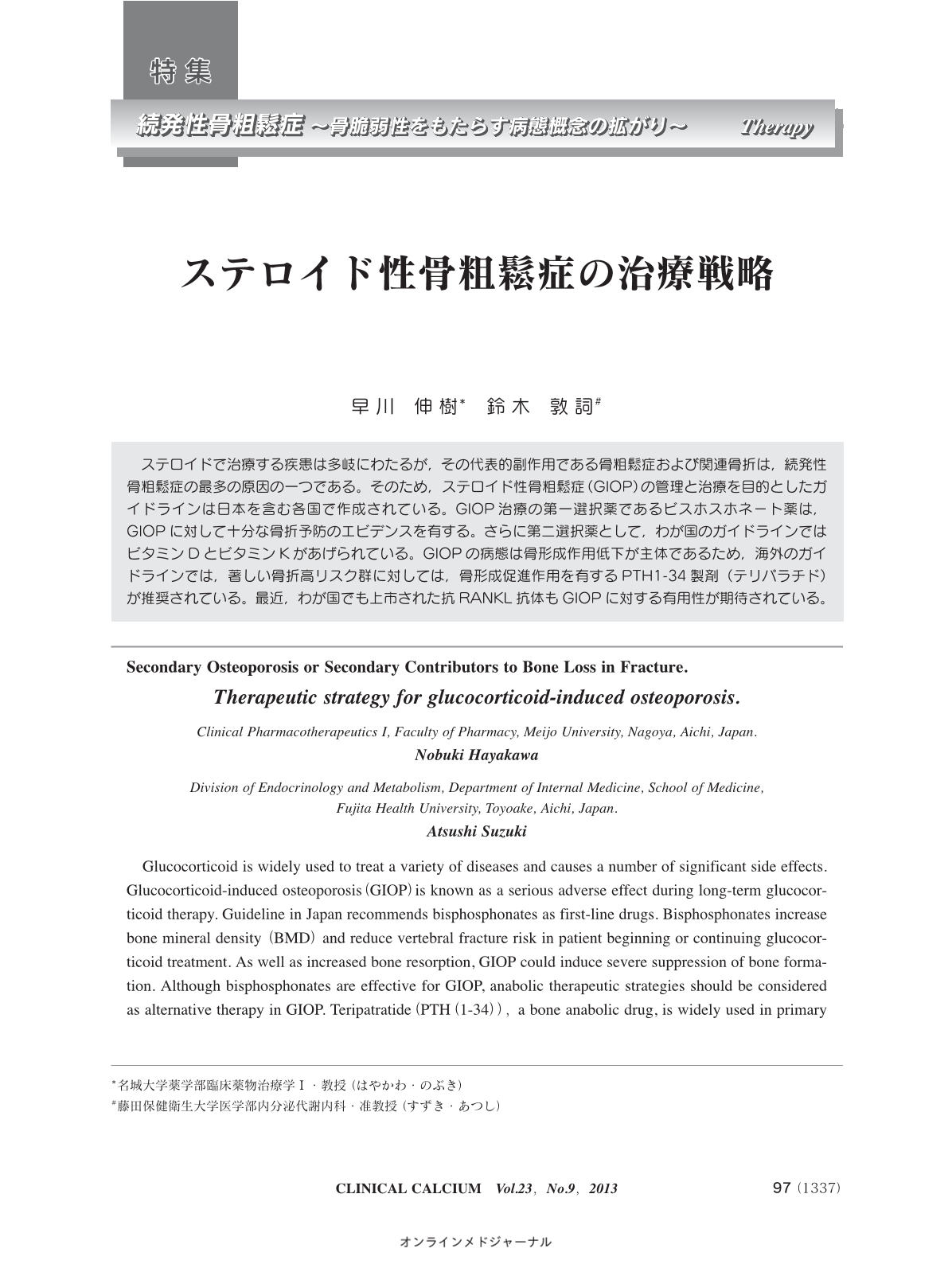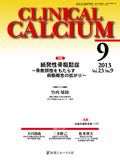Japanese
English
- 有料閲覧
- Abstract 文献概要
- 1ページ目 Look Inside
- 参考文献 Reference
ステロイドで治療する疾患は多岐にわたるが,その代表的副作用である骨粗鬆症および関連骨折は,続発性骨粗鬆症の最多の原因の一つである。そのため,ステロイド性骨粗鬆症(GIOP)の管理と治療を目的としたガイドラインは日本を含む各国で作成されている。GIOP治療の第一選択薬であるビスホスホネート薬は,GIOPに対して十分な骨折予防のエビデンスを有する。さらに第二選択薬として,わが国のガイドラインではビタミンDとビタミンKがあげられている。GIOPの病態は骨形成作用低下が主体であるため,海外のガイドラインでは,著しい骨折高リスク群に対しては,骨形成促進作用を有するPTH1-34製剤(テリパラチド)が推奨されている。最近,わが国でも上市された抗RANKL抗体もGIOPに対する有用性が期待されている。
Glucocorticoid is widely used to treat a variety of diseases and causes a number of significant side effects. Glucocorticoid-induced osteoporosis(GIOP)is known as a serious adverse effect during long-term glucocorticoid therapy. Guideline in Japan recommends bisphosphonates as first-line drugs. Bisphosphonates increase bone mineral density(BMD)and reduce vertebral fracture risk in patient beginning or continuing glucocorticoid treatment. As well as increased bone resorption, GIOP could induce severe suppression of bone formation. Although bisphosphonates are effective for GIOP, anabolic therapeutic strategies should be considered as alternative therapy in GIOP. Teripatratide(PTH(1-34)),a bone anabolic drug, is widely used in primary osteoporosis with severe osteoporotic fracture or extremely low bone mass, and has been reported to increase BMD and to reduce the risk of fractures also in GIOP. Denosumab, an anti receptor activator of nuclear factor-κB ligand, recently approved as a drug for postmenopausal osteoporosis was also effective for GIOP in clinical trials, and would be new candidate to treat GIOP.



